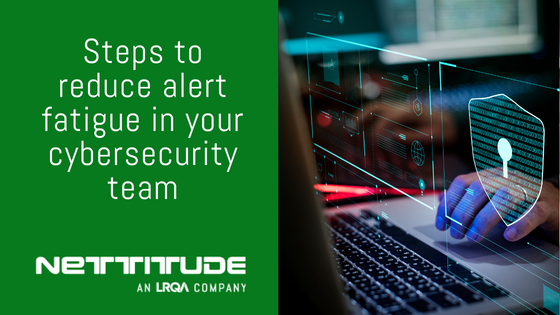Effective cybersecurity relies on your team being alerted to potential issues within your systems and networks. However, the sheer number of alerts generated by improperly configured cybersecurity technology and frameworks causes analysts to develop alert fatigue, as countless false positives and minor issues lead to significant disruption and distraction.
With so many potential threats and a limited number of resources, it can be difficult to prioritise which alerts to investigate. As a result, your team may become overwhelmed and start to ignore or dismiss potentially serious threats. In addition, constantly responding to false positives can take valuable time away from other tasks, such as investigating potential incidents. So, what can we do to resolve the challenging problem of alert fatigue?
Tips for cybersecurity alertness
With a data breach costing your business financially and reputationally, allowing hundreds, or even thousands, of alerts to go unaddressed is not acceptable. Fortunately, numerous techniques help streamline your operation and ensure your team only has to deal with legitimate cybersecurity concerns.
1. Optimise your alerts
Do not let your cybersecurity alerts become overrun by unnecessary information. Instead, ensure your system aligns with your specific cybersecurity goals. If your team needs to navigate alerts that are not relevant to their day-to-day problems, these need to be filtered out so that only the most prevalent tasks remain. By addressing event triggers to ensure they notify only when valid, your team will not be so likely to overlook a serious problem.
2. Add contextual information
When a cybersecurity alert lands in your panel, it should come with contextual information that signals to your team whether they need to take immediate action. While a single notification might not create cause for concern, when contextualised alongside other data points, this might highlight that a cybersecurity threat is underway. With these critical details built into your system, your cybersecurity employees will effectively respond to each situation.
3. Understand the threat landscape
Knowing how your business remains at risk of cyberattacks is a great way to reduce alert fatigue. With a detailed understanding of where your vulnerabilities exist, you can tailor your system to be vigilant about these specific points. Then, it is possible to design your cybersecurity framework to focus on these sources, ensuring you minimise less severe notifications and keep your team alert to potential threats.
4. Adopt AI-based techniques
When needing to filter through thousands of alerts, having a tool that reveals the most important notifications is crucial. Fortunately, the rise of artificial intelligence gives you the power to automatically deal with alerts to ensure you focus on events that really matter. For example, a managed SIEM service can significantly improve incident response and detection by removing manual methods from the equation. This will help your team keep their attention fixated on genuine threats.
Outsource cybersecurity needs
Implementing numerous techniques to reduce your cybersecurity alert fatigue is a crucial step forward. However, another solution can be outsourcing your needs to CREST-approved cybersecurity professionals like Nettitude.
Get in touch to find out more about our range of cybersecurity services.








